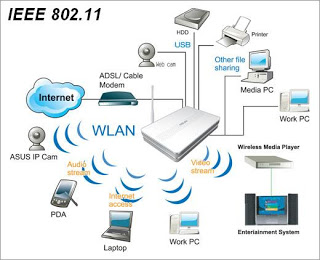Project Management Phases
The Project management phase has 5 phases which are Project conception and initiation, Project definition and planning, Project launch or execution, Project performance and control, and Project close. Where each of the phases has the process of combining systems, techniques, and people to complete a project within set goals of time, budget, and also the quality of the project.
Project conception and initiation
The conception and initiation is the first phase of the Project Management Life Cycle, as it means starting a new project idea. in this phase, we can start a new project by studying the objectives, scope, purpose, and outcomes that can be generated or not it benefits the organisation.
In the initiation phase, a business problem or opportunity is identified, a solution is defined, a project is formed, and the project team is appointed to build and deliver the solution to the customer. Business cases are made to determine the problem or opportunity in detail and identify the solution to be implemented.
The project charter or a project initiation document (PID) that outlines the purpose and requirements of the project. It should include business needs, stakeholders, and the business case.
Project definition and planning
The definition and planning are in the middle of a project life cycle and tells everyone involved where you went and how you were going to get there. The planning phase is when the project plan is documented, project results and requirements are defined, and the project schedule is created. It involves creating a set of plans to help guide your team through the project implementation and closing phases. Plans made during this phase will help you manage time, cost, quality, change, risk, and related issues. They will also help you control staff and external suppliers to ensure that you deliver the project on time, within budget, and within schedule.
Project launch or execution
The launch or execution is the third phase most often associated with project management. execution is about building results that satisfy customers. Team leaders do this by allocating resources and keeping team members focused on the tasks assigned. Execution depends on the planning phase. Teamwork and effort during the implementation phase are derived from the project plan.
Project Performance and control
The Project Performance and control is the fourth phase. In this phase, the project manager will identify any areas where things do not match, take the time to make adjustments immediately. While making minor adjustments along the way, you can prevent bigger achievements and deadlines from happening.
Project close
The Project close is the last phase. In this phase is the process of finalizing all activities for the project after completing the project task. Which the Project Manager takes center stage and will check that all project work is completed and that the project has met its objectives, including work and objectives added along the way as a result of the approved change request.
References
Initiation Phase - Project Initiation Phase. (2020). Method123.com. Retrieved 8 April 2020, from https://www.method123.com/project-initiation-phase.php
(2020). Villanovau.com. Retrieved 8 April 2020, from https://www.villanovau.com/resources/project-management/5-phases-project-management-lifecycle/
Watt, A. (2014). 7. Project Initiation. Bccampus. Retrieved from https://opentextbc.ca/projectmanagement/chapter/chapter-7-project-initiation-project-management/
Peterman, R. (2016). Project Management Phases: Exploring Phase #4 – Monitoring & Control. Project-Management.com. Retrieved 8 April 2020, from https://project-management.com/project-management-phases-exploring-phase-4-monitoring-control/
Greycampus. (2020). Greycampus.com. Retrieved 8 April 2020, from https://www.greycampus.com/opencampus/project-management-professional/closing-a-project-or-phase
Demystifying the 5 Phases of Project Management. (2020). Smartsheet. Retrieved 8 April 2020, from https://www.smartsheet.com/blog/demystifying-5-phases-project-management
















































